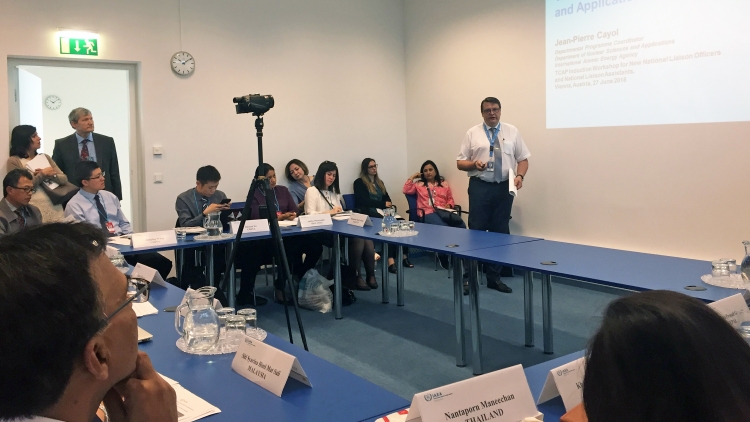New National Liaison Officers (NLOs) and National Liaison Assistants (NLAs) from the Asia and the Pacific attended an induction meeting at IAEA Headquarters in Vienna.
The National Liaison Officer is the primary contact person between the IAEA and a Member State on matters relating to the IAEA, in particular the TC programme. The efficient and effective planning, formulation and management of the TC programme, and other related IAEA activities, strongly depend on the NLO, who has two key roles to play: helping the IAEA to understand the country’s needs, and helping the country to understand the IAEA. Jane Gerardo Abaya, Section Head, Division for Asia and the Pacific highlighted their import role: “NLOs play a key role in the TC programme. They help identify, design, implement and monitor TC projects, and assist in maintaining our high levels of efficiently delivered services to Member States in the Asia and the Pacific region.”
The induction meeting, opened by Mr Oscar Acuna and Ms Jane Gerardo-Abaya, Section Heads, Division for Asia and the Pacific, brought together 23 NLOs and NLAs from 16 IAEA Member States, including Bahrain, Bangladesh, China, Indonesia, Islamic Republic of Iran, Lao People's Democratic Republic, Lebanon, Malaysia, Nepal, Pakistan, Philippines, Saudi Arabia, Sri Lanka, Syrian Arab Republic, Thailand and Viet Nam.
This meeting was very useful in learning about the services offered by the IAEA through its TC programme to its Member States, as well as providing us with a good opportunity to network multilaterally





